-
EXECUTIVE SUMMARY
-
MARKET INTRODUCTION
-
Definition
-
Scope of the Study
- Research Objective
- Assumptions
- Limitations
-
RESEARCH METHODOLOGY
-
Overview
-
Data Mining
-
Secondary Research
-
Primary Research
- Primary Interviews and Information Gathering Process
- Breakdown of Primary Respondents
-
Forecasting Model
-
Market Size Estimation
- Bottom-Up Approach
- Top-Down Approach
-
Data Triangulation
-
Validation
-
MARKET DYNAMICS
-
Overview
-
Drivers
-
Restraints
-
Opportunities
-
MARKET FACTOR ANALYSIS
-
Value Chain Analysis
-
Porter’s Five Forces Analysis
- Bargaining Power of Suppliers
- Bargaining Power of Buyers
- Threat of New Entrants
- Threat of Substitutes
- Intensity of Rivalry
-
COVID-19 Impact Analysis
- Market Impact Analysis
- Regional Impact
- Opportunity and Threat Analysis
-
GLOBAL GABAPENTIN MARKET, BY DOSAGE FORM
-
Overview
-
Tablet
-
Capsule
-
Oral Solution
-
GLOBAL GABAPENTIN MARKET, BY TYPE
-
Overview
-
Generic
-
Branded
-
GLOBAL GABAPENTIN MARKET, BY APPLICATION
-
Overview
-
Epilepsy
-
Neuropathic Pain
-
Restless Legs Syndrome
-
Others
-
GLOBAL GABAPENTIN MARKET, BY END-USE
-
Overview
-
Hospital Pharmacy
-
Retail Pharmacy
-
Online Pharmacy
-
GLOBAL GABAPENTIN MARKET, BY REGION
-
Overview
-
North America
- U.S.
- Canada
-
Europe
- Germany
- France
- U.K
- Italy
- Spain
- Rest of Europe
-
Asia-Pacific
- China
- India
- Japan
- South Korea
- Australia
- Rest of Asia-Pacific
-
Rest of the World
- Middle East
- Africa
- Latin America
-
COMPETITIVE LANDSCAPE
-
Overview
-
Competitive Analysis
-
Market Share Analysis
-
Major Growth Strategy in the Global Gabapentin Market,
-
Competitive Benchmarking
-
Leading Players in Terms of Number of Developments in the Global Gabapentin Market,
-
Key developments and Growth Strategies
- New Dosage Form Launch/Type Application
- Merger & Acquisitions
- Joint Ventures
-
Major Players Financial Matrix
- Sales & Operating Income, 2022
- Major Players R&D Expenditure. 2022
-
COMPANY PROFILES
-
ZYDUS PHARMACEUTICALS, INC
- Company Overview
- Financial Overview
- Dosage Forms Offered
- Key Developments
- SWOT Analysis
- Key Strategies
-
Glenmark Pharmaceuticals Limited
- Company Overview
- Financial Overview
- Dosage Forms Offered
- Key Developments
- SWOT Analysis
- Key Strategies
-
SUN PHARMACEUTICAL INDUSTRIES LTD.
- Company Overview
- Financial Overview
- Dosage Forms Offered
- Key Developments
- SWOT Analysis
- Key Strategies
-
Ascend Laboratories, LLC
- Company Overview
- Financial Overview
- Dosage Forms Offered
- Key Developments
- SWOT Analysis
- Key Strategies
-
Apotex Inc.
- Company Overview
- Financial Overview
- Dosage Forms Offered
- Key Developments
- SWOT Analysis
- Key Strategies
-
TEVA PHARMACEUTICAL INDUSTRIES LTD.
- Company Overview
- Financial Overview
- Dosage Forms Offered
- Key Developments
- SWOT Analysis
- Key Strategies
-
Aurobindo Pharma
- Company Overview
- Financial Overview
- Dosage Forms Offered
- Key Developments
- SWOT Analysis
- Key Strategies
-
Amneal Pharmaceuticals LLC.
- Company Overview
- Financial Overview
- Dosage Forms Offered
- Key Developments
- SWOT Analysis
- Key Strategies
-
Cipla USA, Inc.
- Company Overview
- Financial Overview
- Dosage Forms Offered
- Key Developments
- SWOT Analysis
- Key Strategies
-
APPENDIX
-
References
-
Related Reports
-
-
LIST OF TABLES
-
GLOBAL GABAPENTIN MARKET, SYNOPSIS, 2018-2032
-
GLOBAL GABAPENTIN MARKET, ESTIMATES & FORECAST, 2018-2032 (USD BILLION)
-
GLOBAL GABAPENTIN MARKET, BY DOSAGE FORM, 2018-2032 (USD BILLION)
-
GLOBAL GABAPENTIN MARKET, BY TYPE, 2018-2032 (USD BILLION)
-
GLOBAL GABAPENTIN MARKET, BY APPLICATION, 2018-2032 (USD BILLION)
-
GLOBAL GABAPENTIN MARKET, BY END-USE, 2018-2032 (USD BILLION)
-
NORTH AMERICA GABAPENTIN MARKET, BY DOSAGE FORM, 2018-2032 (USD BILLION)
-
NORTH AMERICA GABAPENTIN MARKET, BY TYPE, 2018-2032 (USD BILLION)
-
NORTH AMERICA GABAPENTIN MARKET, BY APPLICATION, 2018-2032 (USD BILLION)
-
NORTH AMERICA GABAPENTIN MARKET, BY END-USE, 2018-2032 (USD BILLION)
-
NORTH AMERICA GABAPENTIN MARKET, BY COUNTRY, 2018-2032 (USD BILLION)
-
U.S. GABAPENTIN MARKET, BY DOSAGE FORM, 2018-2032 (USD BILLION)
-
U.S. GABAPENTIN MARKET, BY TYPE, 2018-2032 (USD BILLION)
-
U.S. GABAPENTIN MARKET, BY APPLICATION, 2018-2032 (USD BILLION)
-
U.S. GABAPENTIN MARKET, BY END-USE, 2018-2032 (USD BILLION)
-
CANADA GABAPENTIN MARKET, BY DOSAGE FORM, 2018-2032 (USD BILLION)
-
CANADA GABAPENTIN MARKET, BY TYPE, 2018-2032 (USD BILLION)
-
CANADA GABAPENTIN MARKET, BY APPLICATION, 2018-2032 (USD BILLION)
-
CANADA GABAPENTIN MARKET, BY END-USE, 2018-2032 (USD BILLION)
-
EUROPE GABAPENTIN MARKET, BY DOSAGE FORM, 2018-2032 (USD BILLION)
-
EUROPE GABAPENTIN MARKET, BY TYPE, 2018-2032 (USD BILLION)
-
EUROPE GABAPENTIN MARKET, BY APPLICATION, 2018-2032 (USD BILLION)
-
EUROPE GABAPENTIN MARKET, BY END-USE, 2018-2032 (USD BILLION)
-
EUROPE GABAPENTIN MARKET, BY COUNTRY, 2018-2032 (USD BILLION)
-
GERMANY GABAPENTIN MARKET, BY DOSAGE FORM, 2018-2032 (USD BILLION)
-
GERMANY GABAPENTIN MARKET, BY TYPE, 2018-2032 (USD BILLION)
-
GERMANY GABAPENTIN MARKET, BY APPLICATION, 2018-2032 (USD BILLION)
-
GERMANY GABAPENTIN MARKET, BY END-USE, 2018-2032 (USD BILLION)
-
FRANCE GABAPENTIN MARKET, BY DOSAGE FORM, 2018-2032 (USD BILLION)
-
FRANCE GABAPENTIN MARKET, BY TYPE, 2018-2032 (USD BILLION)
-
FRANCE GABAPENTIN MARKET, BY APPLICATION, 2018-2032 (USD BILLION)
-
FRANCE GABAPENTIN MARKET, BY END-USE, 2018-2032 (USD BILLION)
-
ITALY GABAPENTIN MARKET, BY DOSAGE FORM, 2018-2032 (USD BILLION)
-
ITALY GABAPENTIN MARKET, BY TYPE, 2018-2032 (USD BILLION)
-
ITALY GABAPENTIN MARKET, BY APPLICATION, 2018-2032 (USD BILLION)
-
ITALY GABAPENTIN MARKET, BY END-USE, 2018-2032 (USD BILLION)
-
SPAIN GABAPENTIN MARKET, BY DOSAGE FORM, 2018-2032 (USD BILLION)
-
SPAIN GABAPENTIN MARKET, BY TYPE, 2018-2032 (USD BILLION)
-
SPAIN GABAPENTIN MARKET, BY APPLICATION, 2018-2032 (USD BILLION)
-
SPAIN GABAPENTIN MARKET, BY END-USE, 2018-2032 (USD BILLION)
-
U.K GABAPENTIN MARKET, BY DOSAGE FORM, 2018-2032 (USD BILLION)
-
U.K GABAPENTIN MARKET, BY TYPE, 2018-2032 (USD BILLION)
-
U.K GABAPENTIN MARKET, BY APPLICATION, 2018-2032 (USD BILLION)
-
U.K GABAPENTIN MARKET, BY END-USE, 2018-2032 (USD BILLION)
-
REST OF EUROPE GABAPENTIN MARKET, BY DOSAGE FORM, 2018-2032 (USD BILLION)
-
REST OF EUROPE GABAPENTIN MARKET, BY TYPE, 2018-2032 (USD BILLION)
-
REST OF EUROPE GABAPENTIN MARKET, BY APPLICATION, 2018-2032 (USD BILLION)
-
REST OF EUROPE GABAPENTIN MARKET, BY END-USE, 2018-2032 (USD BILLION)
-
ASIA PACIFIC GABAPENTIN MARKET, BY DOSAGE FORM, 2018-2032 (USD BILLION)
-
ASIA PACIFIC GABAPENTIN MARKET, BY TYPE, 2018-2032 (USD BILLION)
-
ASIA PACIFIC GABAPENTIN MARKET, BY APPLICATION, 2018-2032 (USD BILLION)
-
ASIA PACIFIC GABAPENTIN MARKET, BY END-USE, 2018-2032 (USD BILLION)
-
ASIA PACIFIC GABAPENTIN MARKET, BY COUNTRY, 2018-2032 (USD BILLION)
-
JAPAN GABAPENTIN MARKET, BY DOSAGE FORM, 2018-2032 (USD BILLION)
-
JAPAN GABAPENTIN MARKET, BY TYPE, 2018-2032 (USD BILLION)
-
JAPAN GABAPENTIN MARKET, BY APPLICATION, 2018-2032 (USD BILLION)
-
JAPAN GABAPENTIN MARKET, BY END-USE, 2018-2032 (USD BILLION)
-
CHINA GABAPENTIN MARKET, BY DOSAGE FORM, 2018-2032 (USD BILLION)
-
CHINA GABAPENTIN MARKET, BY TYPE, 2018-2032 (USD BILLION)
-
CHINA GABAPENTIN MARKET, BY APPLICATION, 2018-2032 (USD BILLION)
-
CHINA GABAPENTIN MARKET, BY END-USE, 2018-2032 (USD BILLION)
-
INDIA GABAPENTIN MARKET, BY DOSAGE FORM, 2018-2032 (USD BILLION)
-
INDIA GABAPENTIN MARKET, BY TYPE, 2018-2032 (USD BILLION)
-
INDIA GABAPENTIN MARKET, BY APPLICATION, 2018-2032 (USD BILLION)
-
INDIA GABAPENTIN MARKET, BY END-USE, 2018-2032 (USD BILLION)
-
AUSTRALIA GABAPENTIN MARKET, BY DOSAGE FORM, 2018-2032 (USD BILLION)
-
AUSTRALIA GABAPENTIN MARKET, BY TYPE, 2018-2032 (USD BILLION)
-
AUSTRALIA GABAPENTIN MARKET, BY APPLICATION, 2018-2032 (USD BILLION)
-
AUSTRALIA GABAPENTIN MARKET, BY END-USE, 2018-2032 (USD BILLION)
-
SOUTH KOREA GABAPENTIN MARKET, BY DOSAGE FORM, 2018-2032 (USD BILLION)
-
SOUTH KOREA GABAPENTIN MARKET, BY TYPE, 2018-2032 (USD BILLION)
-
SOUTH KOREA GABAPENTIN MARKET, BY APPLICATION, 2018-2032 (USD BILLION)
-
SOUTH KOREA GABAPENTIN MARKET, BY END-USE, 2018-2032 (USD BILLION)
-
REST OF ASIA-PACIFIC GABAPENTIN MARKET, BY DOSAGE FORM, 2018-2032 (USD BILLION)
-
REST OF ASIA-PACIFIC GABAPENTIN MARKET, BY TYPE, 2018-2032 (USD BILLION)
-
REST OF ASIA-PACIFIC GABAPENTIN MARKET, BY APPLICATION, 2018-2032 (USD BILLION)
-
REST OF ASIA-PACIFIC GABAPENTIN MARKET, BY END-USE, 2018-2032 (USD BILLION)
-
REST OF WORLD GABAPENTIN MARKET, BY DOSAGE FORM, 2018-2032 (USD BILLION)
-
REST OF WORLD GABAPENTIN MARKET, BY TYPE, 2018-2032 (USD BILLION)
-
REST OF WORLD GABAPENTIN MARKET, BY APPLICATION, 2018-2032 (USD BILLION)
-
REST OF WORLD GABAPENTIN MARKET, BY END-USE, 2018-2032 (USD BILLION)
-
REST OF WORLD GABAPENTIN MARKET, BY COUNTRY, 2018-2032 (USD BILLION)
-
MIDDLE EAST GABAPENTIN MARKET, BY DOSAGE FORM, 2018-2032 (USD BILLION)
-
MIDDLE EAST GABAPENTIN MARKET, BY TYPE, 2018-2032 (USD BILLION)
-
MIDDLE EAST GABAPENTIN MARKET, BY APPLICATION, 2018-2032 (USD BILLION)
-
MIDDLE EAST GABAPENTIN MARKET, BY END-USE, 2018-2032 (USD BILLION)
-
AFRICA GABAPENTIN MARKET, BY DOSAGE FORM, 2018-2032 (USD BILLION)
-
AFRICA GABAPENTIN MARKET, BY TYPE, 2018-2032 (USD BILLION)
-
AFRICA GABAPENTIN MARKET, BY APPLICATION, 2018-2032 (USD BILLION)
-
AFRICA GABAPENTIN MARKET, BY END-USE, 2018-2032 (USD BILLION)
-
LATIN AMERICA GABAPENTIN MARKET, BY DOSAGE FORM, 2018-2032 (USD BILLION)
-
LATIN AMERICA GABAPENTIN MARKET, BY TYPE, 2018-2032 (USD BILLION)
-
LATIN AMERICA GABAPENTIN MARKET, BY APPLICATION, 2018-2032 (USD BILLION)
-
LATIN AMERICA GABAPENTIN MARKET, BY END-USE, 2018-2032 (USD BILLION)
-
-
LIST OF FIGURES
-
RESEARCH PROCESS
-
MARKET STRUCTURE FOR THE GLOBAL GABAPENTIN MARKET
-
MARKET DYNAMICS FOR THE GLOBAL GABAPENTIN MARKET
-
GLOBAL GABAPENTIN MARKET, SHARE (%), BY DOSAGE FORM, 2022
-
GLOBAL GABAPENTIN MARKET, SHARE (%), BY TYPE, 2022
-
GLOBAL GABAPENTIN MARKET, SHARE (%), BY APPLICATION, 2022
-
GLOBAL GABAPENTIN MARKET, SHARE (%), BY END-USE, 2022
-
GLOBAL GABAPENTIN MARKET, SHARE (%), BY REGION, 2022
-
NORTH AMERICA: GABAPENTIN MARKET, SHARE (%), BY REGION, 2022
-
EUROPE: GABAPENTIN MARKET, SHARE (%), BY REGION, 2022
-
ASIA-PACIFIC: GABAPENTIN MARKET, SHARE (%), BY REGION, 2022
-
REST OF THE WORLD: GABAPENTIN MARKET, SHARE (%), BY REGION, 2022
-
GLOBAL GABAPENTIN MARKET: COMPANY SHARE ANALYSIS, 2022 (%)
-
ZYDUS PHARMACEUTICALS, INC: FINANCIAL OVERVIEW SNAPSHOT
-
ZYDUS PHARMACEUTICALS, INC: SWOT ANALYSIS
-
GLENMARK PHARMACEUTICALS LIMITED: FINANCIAL OVERVIEW SNAPSHOT
-
GLENMARK PHARMACEUTICALS LIMITED: SWOT ANALYSIS
-
SUN PHARMACEUTICAL INDUSTRIES LTD.: FINANCIAL OVERVIEW SNAPSHOT
-
SUN PHARMACEUTICAL INDUSTRIES LTD.: SWOT ANALYSIS
-
ASCEND LABORATORIES, LLC: FINANCIAL OVERVIEW SNAPSHOT
-
ASCEND LABORATORIES, LLC: SWOT ANALYSIS
-
APOTEX INC..: FINANCIAL OVERVIEW SNAPSHOT
-
APOTEX INC..: SWOT ANALYSIS
-
TEVA PHARMACEUTICAL INDUSTRIES LTD.: FINANCIAL OVERVIEW SNAPSHOT
-
TEVA PHARMACEUTICAL INDUSTRIES LTD.: SWOT ANALYSIS
-
AUROBINDO PHARMA: FINANCIAL OVERVIEW SNAPSHOT
-
AUROBINDO PHARMA: SWOT ANALYSIS
-
AMNEAL PHARMACEUTICALS LLC.: FINANCIAL OVERVIEW SNAPSHOT
-
AMNEAL PHARMACEUTICALS LLC.: SWOT ANALYSIS
-
CIPLA USA, INC.: FINANCIAL OVERVIEW SNAPSHOT
-
CIPLA USA, INC.: SWOT ANALYSIS

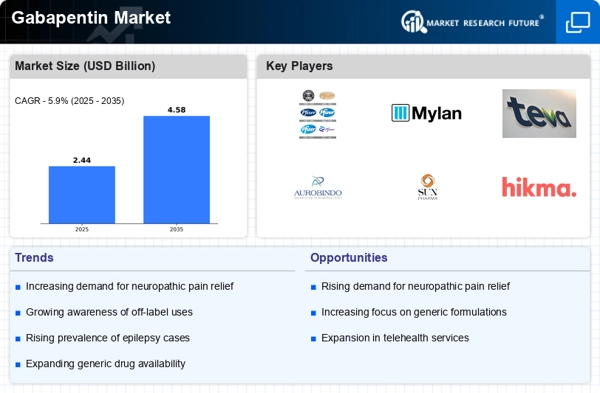
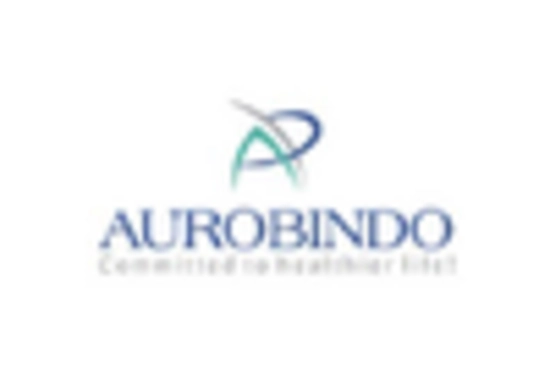
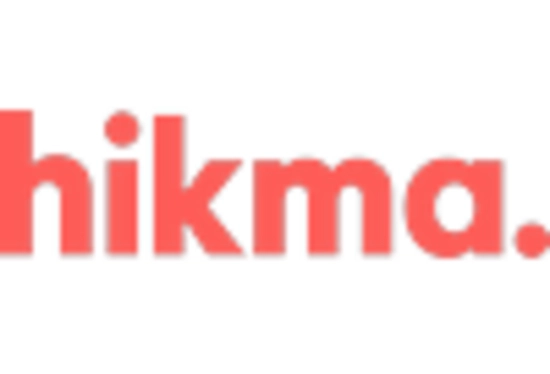
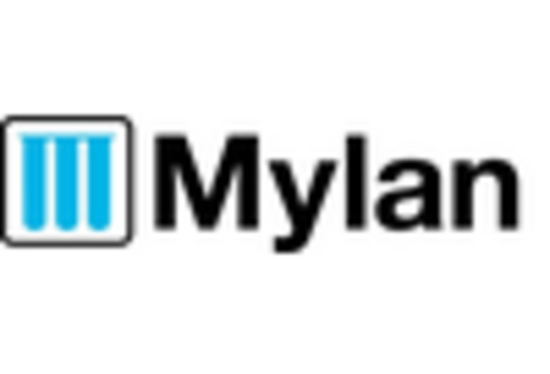
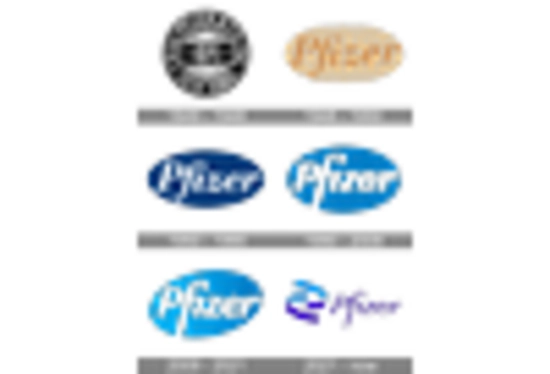

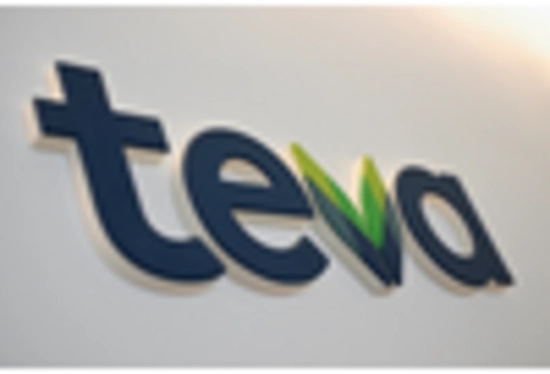

Leave a Comment